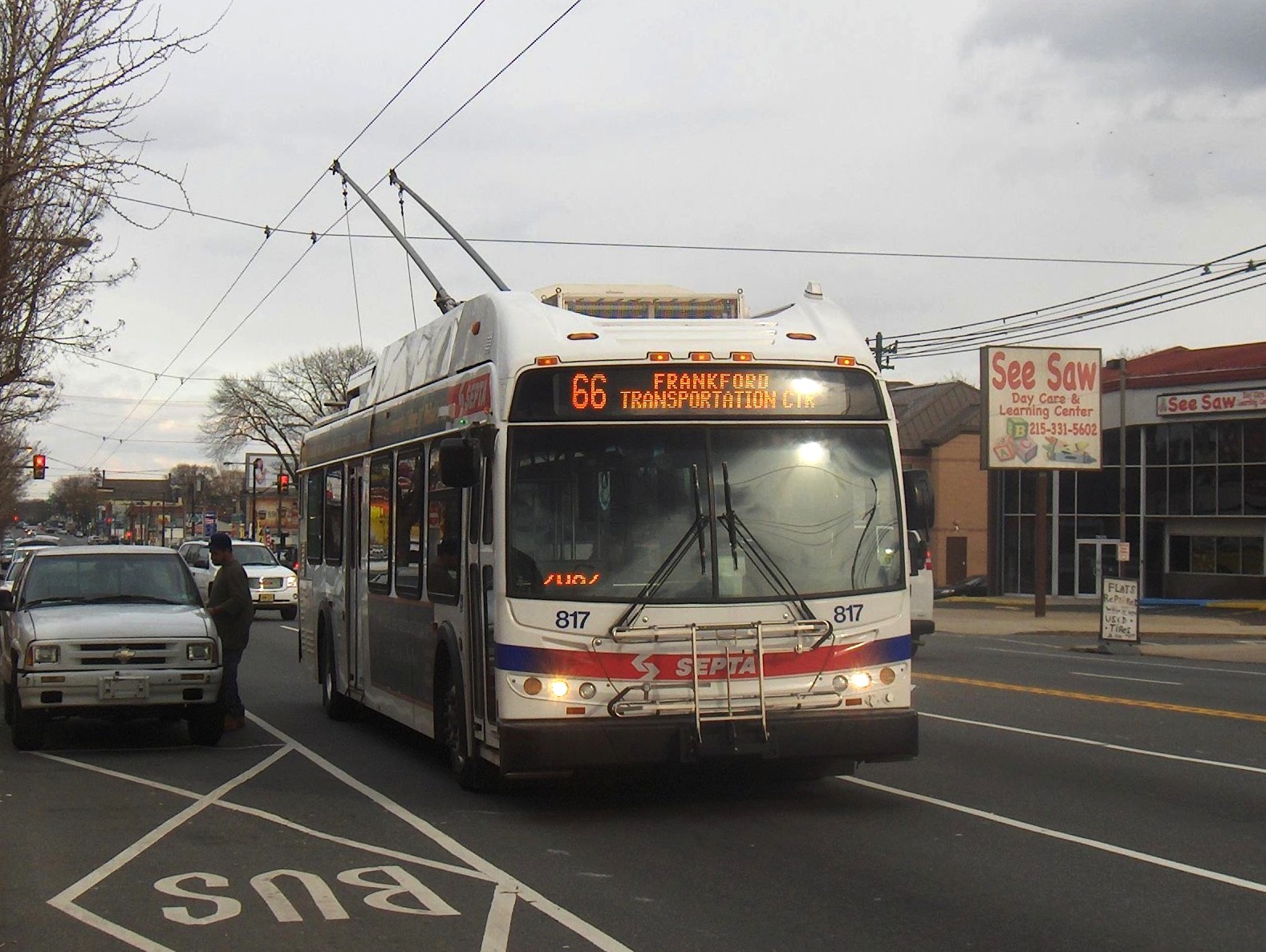Stops consolidated on Frankford Avenue’s Trackless Trolley Route 66

SEPTA announced that it will consolidate 20 stops and relocate 7 more on its Trackless Trolley Route 66 that primarily runs on Frankford Avenue.
The changes to boarding and disembarking will take effect this Sunday, Oct. 11th. The implementation comes just a few short months after the initial proposal in August.
Route 66 is SEPTA’s 23rd busiest route out of the 83 city transit lines, with an average of 10,359 daily riders in 2014. It’s a trackless trolley—or trolleybus—route: basically, a regular bus powered by overhead electrical wires, like a trolley.
The consolidations are expected to improve on-time performance on the Route by eliminating unnecessary stops. Some of the stops on the route were only a little over 100 yards apart – the length of a football field. Bus stop consolidation’s biggest time improvements come from reducing the amount of time buses spend speeding up and slowing down, not picking up and dropping off passengers. Passengers will relocate to the nearest stop and take—in the aggregate—about the same amount of time to board and alight.
Though SEPTA is the agency implementing these changes, it isn’t operating alone. The Transit First Committee—a partnership among SEPTA, the Streets Department, the Mayor’s Office of Transportation and Utilities, and the Delaware Valley Regional Planning Commission—initiated the community feedback outreach and planning to consolidate these stops.
It’s the Committee’s second effort at bus stop consolidation. The first, Route 47 in South Philadelphia, didn’t result in the desired speed improvements because those buses still needed to stop every block for stop signs. Frankford Avenue’s intersections primarily use light signals, not stop signs, and because those signals have been upgraded to prioritize buses.
Since the installation of transit signal prioritization technology along Route 66, on time performance increased 4 percent, up from 87 percent in 2014. Transit signal prioritization (TSP) allows buses and trolleys to communicate with traffic signals to extend green lights. Frankford Avenue is one of six corridors in Philadelphia with TSP technology right now, but there are plans to roll out the technology city-wide. As old traffic signals are replaced during regular upkeep, they will get TSP upgrades.
“On time” is a term of art in the transit industry, meaning vehicles come and go within six minutes of the scheduled time. The stop consolidation and location changes are expected to further improve performance.
WHYY is your source for fact-based, in-depth journalism and information. As a nonprofit organization, we rely on financial support from readers like you. Please give today.






